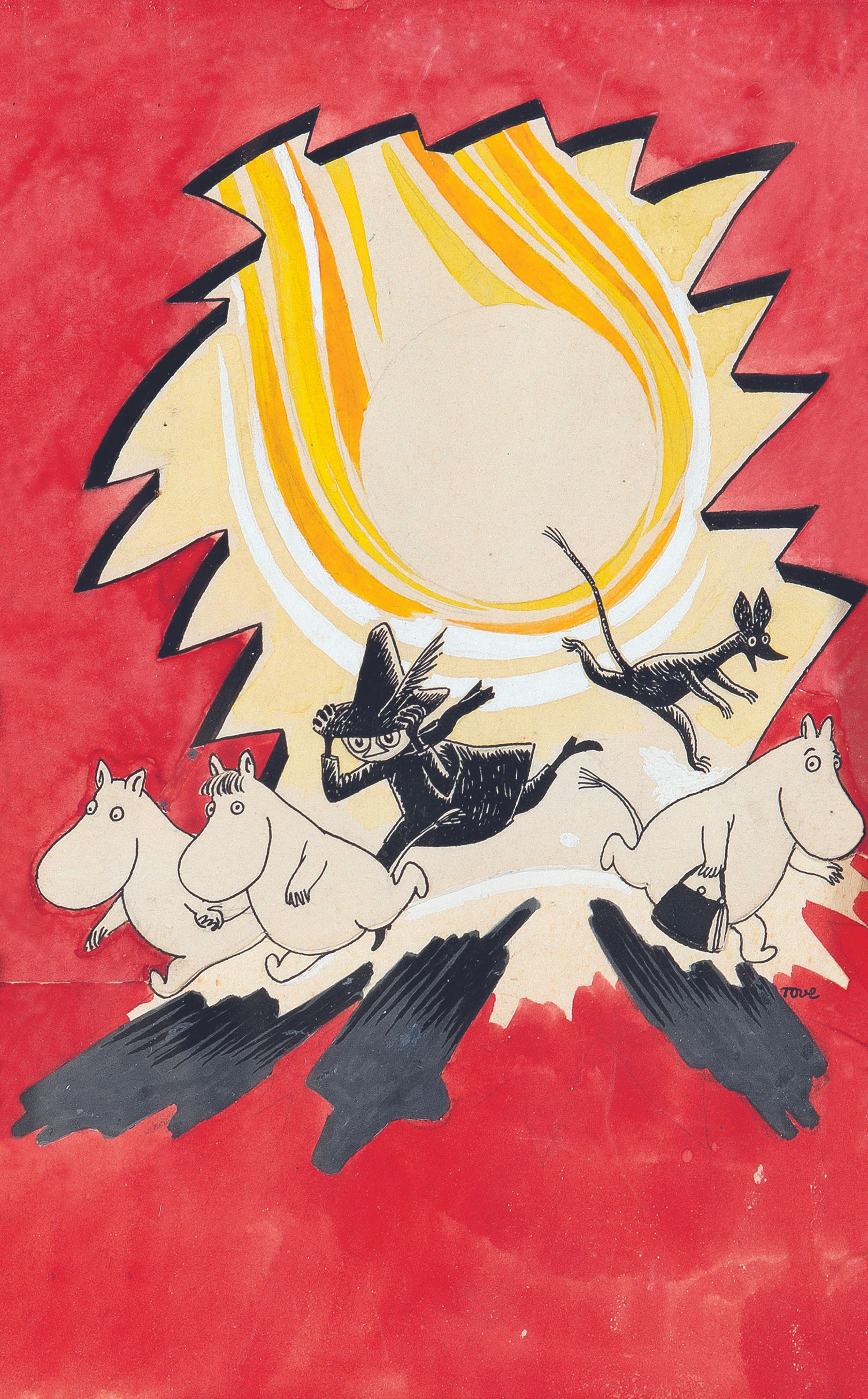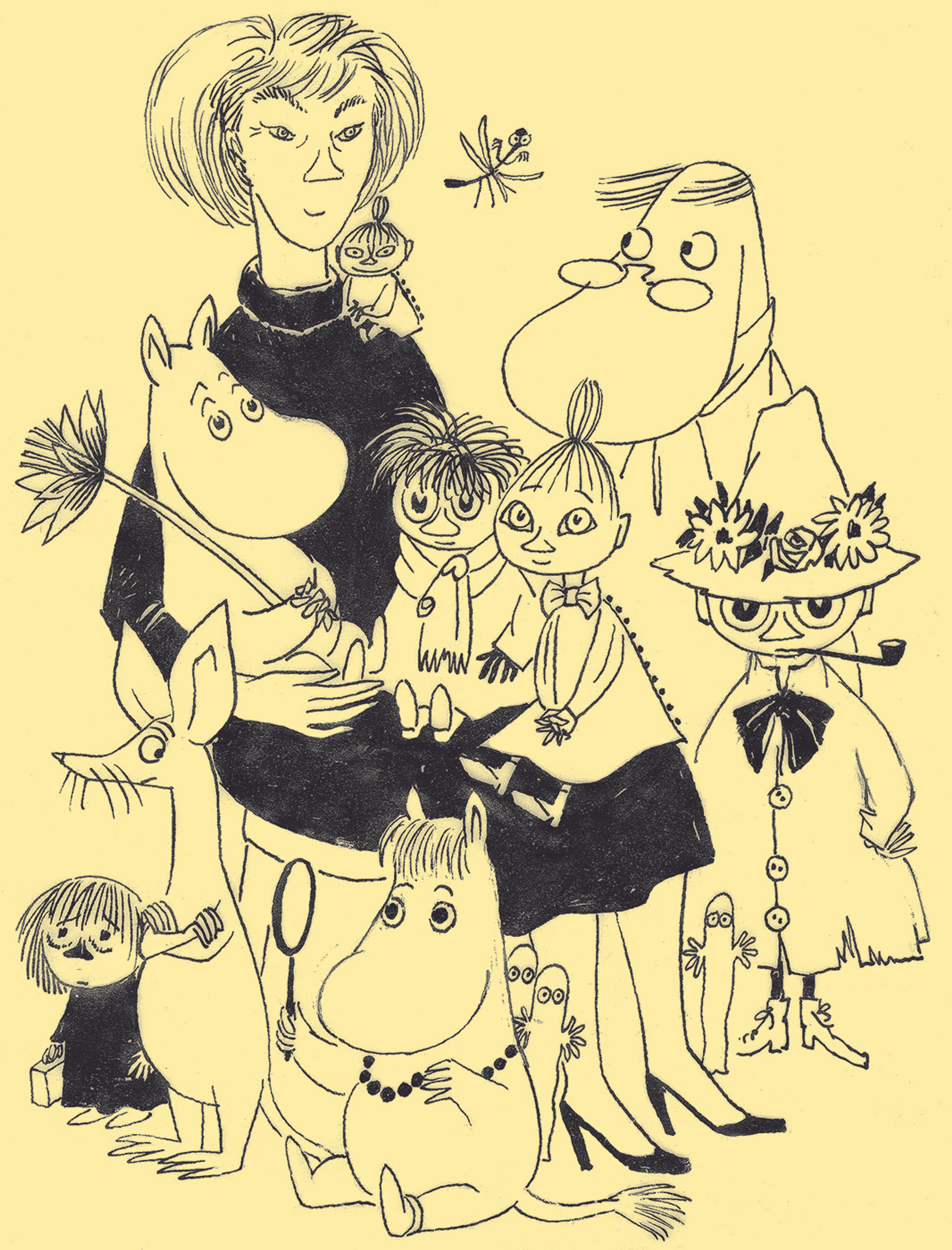Tove Jansson
by Olivia Ahmad, Quentin Blake Centre team
This LGBT+ History Month, we’re recommending Tove Jansson by Paul Gravett, a deep-dive on the illustration of the pioneering Finnish artist and writer. We talked to Paul about how Tove’s life and illustration met.
Tove Jansson’s woodland trolls the Moomins have become a global phenomenon since she published Småtrollen och den stora översvämningen (The Little Trolls and the Great Flood) in 1945. In his latest book, Paul Gravett traces their evolution from children’s novels to comic strip icons.

The book opens right at the beginning of Tove’s life as an illustrator, when aged seven she was making picture books and duplicating them on a hectograph for her classmates, with subjects ranging from Christmas Sausage to Death.
Tove learned to draw with her mother, Signe Hammarsten-Jansson (known as ‘Ham’), whose work included designing banknotes for the Bank of Finland and illustrating more than 300 books. In 1929 when Ham was caring for Tove’s ailing grandmother, Tove stepped in to complete her commissions. She illustrated the cover and a comic strip for children’s magazine Lunkentus, beginning her career as a published illustrator aged just 14. But that wasn’t her plan: “Tove wanted to be a great and successful painter, above all else” Paul explains. “Illustration was seen then, by her and by most, as a secondary art done for commerce not self-expression. She became a very good, talented painter, but not such a highly distinctive, unconventional or independent one. I feel her true nature, originality and individuality shine through more clearly in her other works, and of course in the Moomins. I’m not alone in being grateful that she pursued the quirky and benign cast of her fantasy world.”

As Paul reveals throughout the book, Tove did find self-expression in her illustration. “I think all her personal, authorial illustrations are more or less related to her life and feelings as she was working on them” he says, “and not only the barely disguised memoirs or self-portraits. She saw herself and her real and chosen families in the cast of her Moomin novels and strips.”
One striking self-portrait in the book is seen in Party in the City, a mural painted by Tove at Helsinki City Hall in 1947. In a lavish party scene, Tove is sitting alone in looking into the distance, while her lover Vivica Bandler dances with a man behind her. Paul explains that “homosexuality, male and female, was banned by law in Finland until 1971, but this didn’t stop Tove referring to it in disguise. For example, her two characters Tovslan and Vifslan [who appeared in comics and advertisements] with their closeness and secret language refer to Tove and Vivica. The couple lived their lives together so fully and creatively, they are an inspiration.”
Paul ends the book with Tove’s words (via Moomintroll) “how very different people are”. “This belongs to the tenets of ‘Moominism’” Paul says. “Her novels, both for all ages and for adults, her cartoons, comics and picture books, all express a multi-faceted philosophy that seems to speak to us even more now, given these times of war, pandemic and climate crisis. More than an acceptance, tolerance or indifference towards the otherness of others, her worldview was supportive and celebratory, encouraging empathy with and delight in others and living your life your way.”
